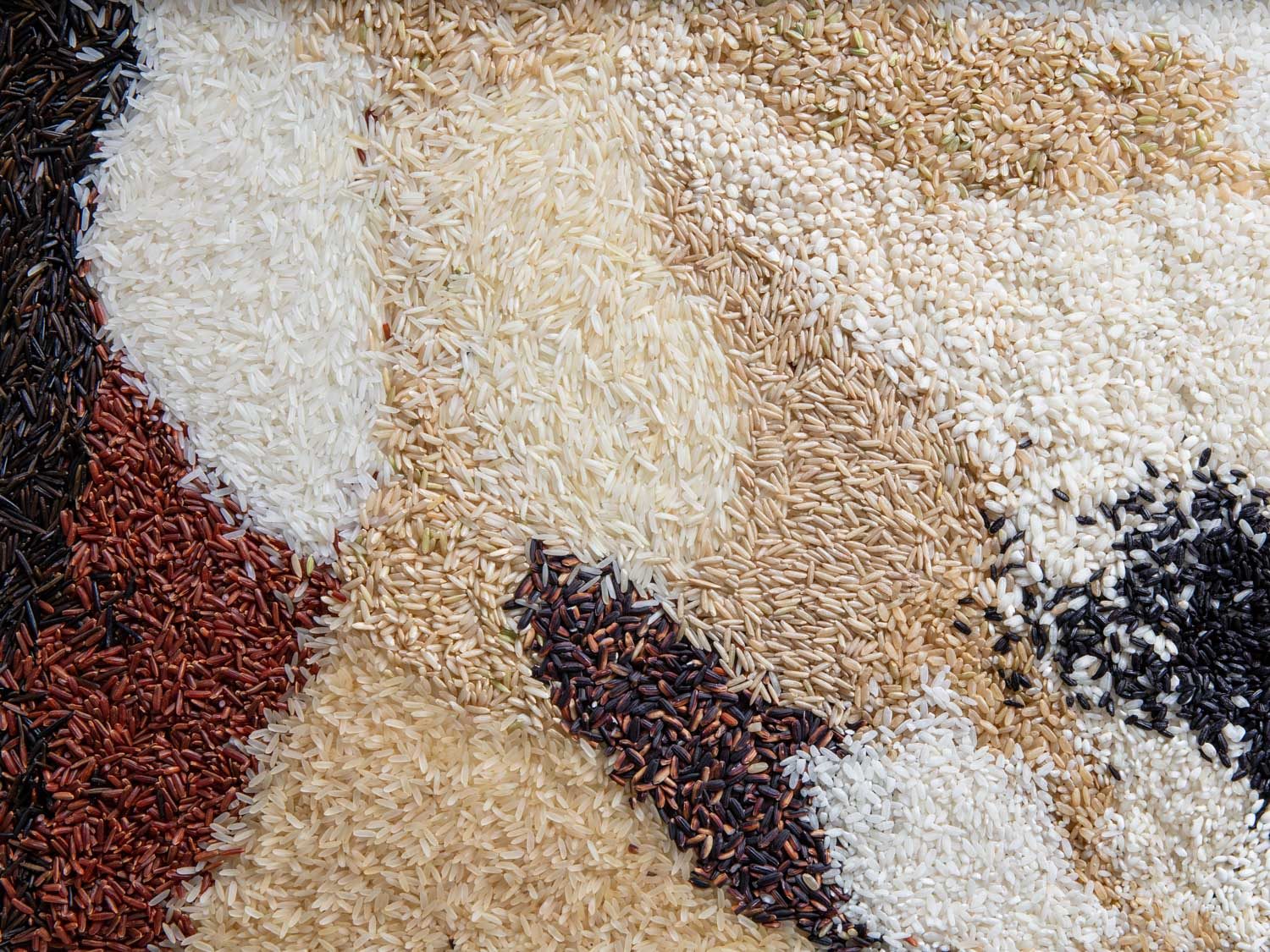
[Photographs: Vicky Wasik]
When I visited my Japanese family during summers as a child, my aunt would insist, at every meal, that I eat every last grain of rice in my bowl. It was, in part, a kind of exercise to improve my proficiency with chopsticks, which she was rightly concerned about. But if I objected, she’d quickly remind me that every grain of rice was precious; that rice was a luxury, despite the fact that it was served nearly every time we sat down at the table.
Granted, my mother and her sister grew up quite poor, but this parsimony regarding rice didn’t stem from their childhood poverty alone. It was—is—cultural, the indelible result of growing up in an environment where rice is revered.
The Japanese are, of course, not alone. They belong to the majority of the world’s population that values rice highly enough to eat it every day, often multiple times a day. Over half of the people on the planet rely on rice as a staple food, which means it constitutes a dominant part of their nutritional diet, and that’s despite the fact that it is relatively difficult to produce, store, and trade, compared with other grains.
Much of the rice grown across the world (most of it in Asia) is still produced using extremely labor- and resource-intensive methods. Because rice is typically eaten as a whole grain, rather than as a meal or flour, the costs associated with storing and trading rice are higher than, say, those required for wheat flour, or oats. And, finally, because rice is not a monolith but rather a bunch (really, hundreds if not thousands!) of different varieties, each of which is preferred by different cultures, groups, families, groups within groups, and family members within families, it’s a trickier commodity to store and sell than flour.
And yet, incredibly, we still produce it by the millions of tons, and we still, all over the world, love to eat whatever type of rice we love to eat. Even though it’s costly to produce, even though it has resisted generations upon generations of technocrats’ efforts to become easier to produce, and even though there are many, many other grains and foods that can function as dietary staples (like sweet potatoes and yams), which you can often purchase for less money, with less hassle, and without regard for variety or type. Yes, we humans like it that much.
But what is it, really? Where did it come from? How did it evolve? What’s the difference between all those bags on the grocery store shelves? Why is there so much rice? Answers to one or two of those questions are below.
What Is Rice?
[top]
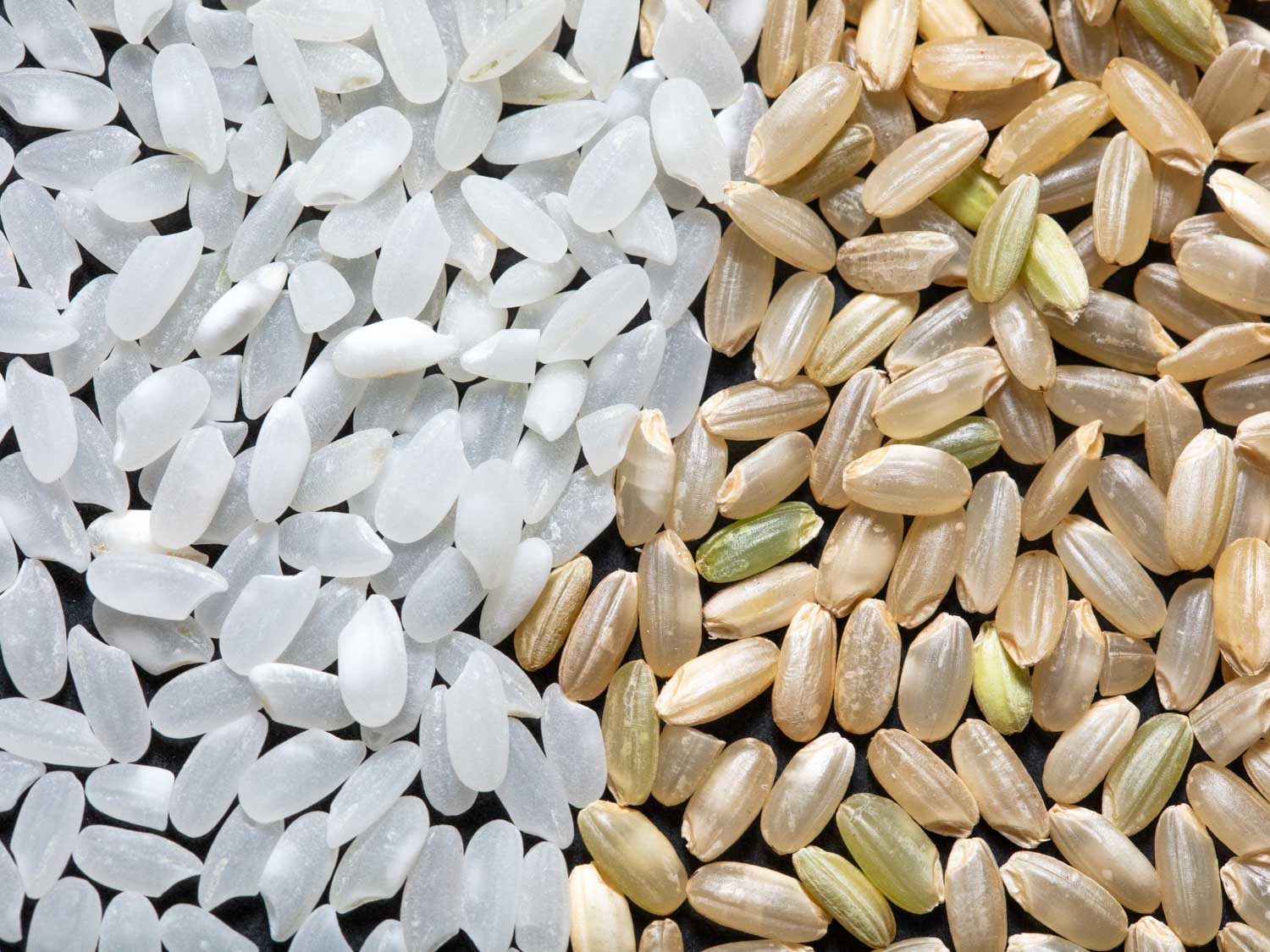
Rice, like other grains, is the edible seed of a grass. It is unique among grains in that it was domesticated not once, not twice, but three times, on three different continents. (See, we really, really love it!)
The rice that most of us are familiar with today comes from Oryza sativa, subspecies of which produce rice as varied as the vinegared stuff used in sushi and the long and fluffy grains found in biryani, and it was domesticated in China anywhere between 8,200 and 13,500 years ago.
While the rice domesticated in Brazil no longer exists, having been abandoned after European colonizers arrived, African rice (Oryza glaberrima) was domesticated some 2,000 to 3,000 years ago and is still grown today, although solely for sustenance; it is unlikely you’ll ever find examples of it in stores.
Once domesticated, Oryza sativa spread across Asia and, subsequently, the world, but not before two major subspecies emerged. The japonica subspecies of rice is marked by short, fat grains that are typically sticky when cooked; “sushi” rice is japonica, as are the varieties of rice traditionally used in Italian risotto, such as Carnaroli and arborio. Then there’s the indica variety, which has long, thin grains that are drier and flakier when cooked. Basmati rice is one of the most widely known examples, and those big bags of Carolina rice you see at the grocery store are also of the indica variety.
Rice is also classified according to the way it’s grown, with the main distinctions being upland versus lowland rice (terms that refer to the altitude at which the rice grows) and irrigated versus rainfed rice (terms that refer to the water source used).
The vast majority of rice in the world—about 75% of total rice production, according to the online resource Ricepedia, an information hub run in partnership between the International Rice Research Institute, AfricaRice, and the International Center for Tropical Agriculture—is lowland rice grown in irrigated fields, the kind that produce those images of leagues upon leagues of glistening rice paddies, tended to by bent-backed workers. But even though rainfed upland varieties of rice make up a far smaller proportion of total rice production in the world, there are nevertheless 100 million people who rely on that kind of rice as their staple food.
Why Is Rice So Popular?
[top]
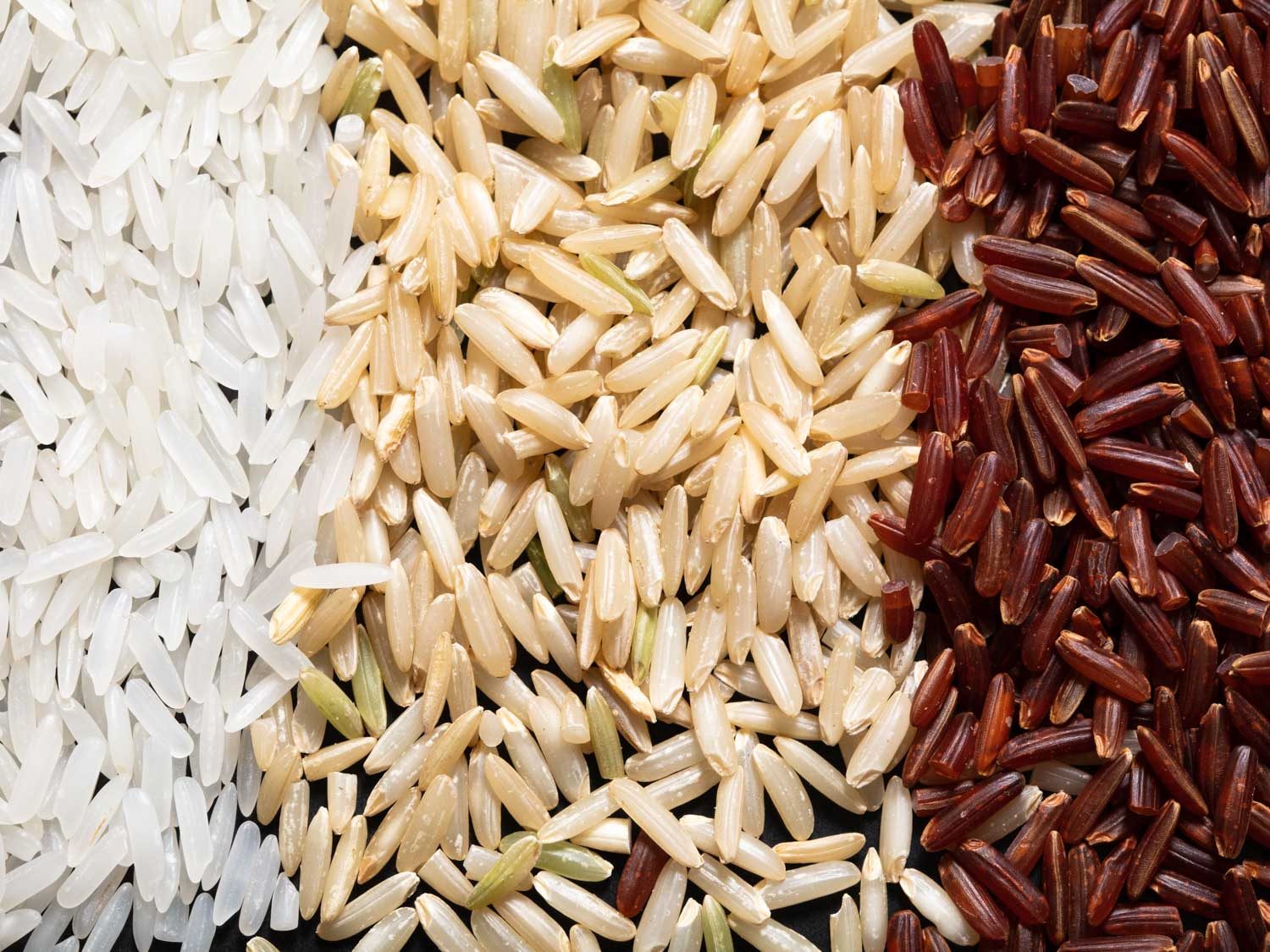
The history of rice makes plain that one of the main reasons behind its near-ubiquity as a staple food is its adaptability as a crop: Different varieties can be grown like wheat or maize in upland areas, with little to no irrigation, even as their near-cousins can thrive in tropical or temperate environments, with extensive irrigation.
But there is another aspect of rice that explains its popularity: taste. The history of rice also shows that people all over the world come to love the taste of rice, and not just any variety. Different peoples at different times come to adopt taste preferences regarding rice, which have often refused to be moved by technological advances.
For example, when Champa rice, an early-ripening and drought-resistant variety that would eventually change the nature of rice cultivation worldwide, was introduced to China in the 11th century, many farmers adopted it in order to more easily pay their rice tax to the government, even though an older variety of rice was far more prized. In response, the government decreed that Champa rice could be used to pay the rice tax only with an additional 10% surcharge.*
* From Rice: Global Networks and New Histories, edited by Francesca Bray, Peter A. Coclanis, Edda L. Fields-Black, and Dagmar Schafer. If you have any interest in the long, tumultuous, and controversial study of the history of rice, this is an excellent resource.
Similar challenges emerged during the 1960s Green Revolution; during the Great Leap Forward in China (obviously, a bit different in spirit, but the goals were similar); and, even more recently, with efforts like the Golden Rice Project, which is producing a genetically modified variety of rice with the hope of addressing the problem of micronutrient deficiency. In each of these examples, agricultural advancements designed to increase rice yields have had to contend with the reality that rice is not just a single, fungible commodity, but a class of commodity that is made up of many, many varieties, each of which has a specific market due to cultural taste preferences.
Simply put: People like the rice they like, and it can be very difficult to convince them to change their minds, even if you provide more economical or more nutritious options.
How Rice Is Processed and Sold
[top]
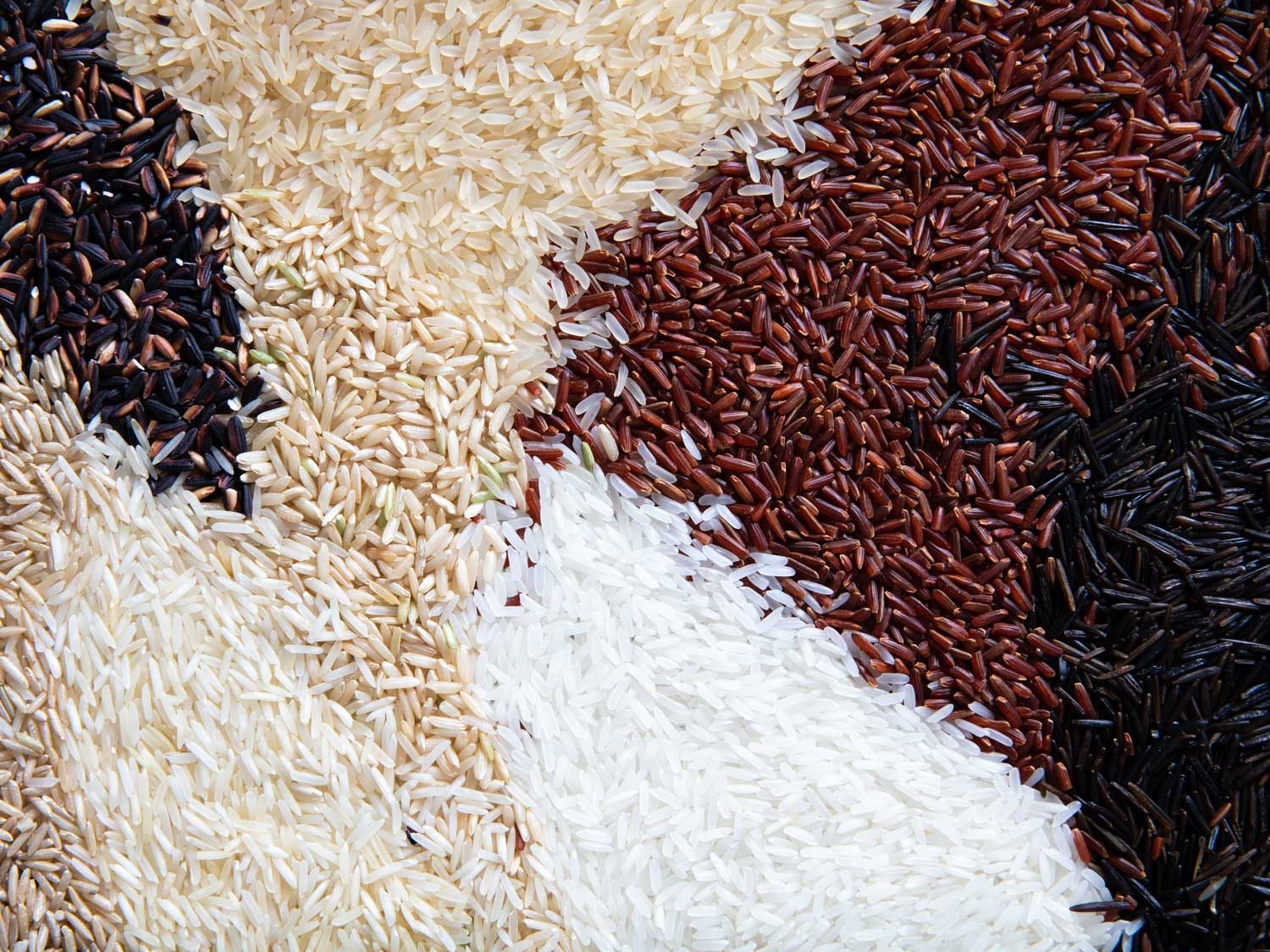
Aside from the different types of rice out there, which are the products of generations of crop selection, most rice can be classified by how much it has been processed.
As Harold McGee explains in On Food and Cooking, the very nature of how we tend to consume rice adds to the cost of its production: “Because rice is usually consumed as individual grains and not as meal or flour, rice milling is much more involved than the grind-and-sieve approach taken to wheat or corn.” In other words, because it won’t be ground to oblivion, like wheat or corn, rice requires more careful handling to preserve its grains. Also, unlike wheat, rye, and maize, rice has a husk (much like barley and oats), which must be removed before further processing, adding another step.
After a grain of rice is husked, what remains is what we call brown rice, an intact kernel that is still covered with layers of bran. Typically, the layers of bran and the germ will be abraded off the kernel, which is then polished to remove the aleurone layer, a very thin layer of oil, minerals, protein, and vitamins. (That layer’s high fat content increases the likelihood of spoilage, so removing it improves the storage life of the grain.) What you’re left with is polished white rice.
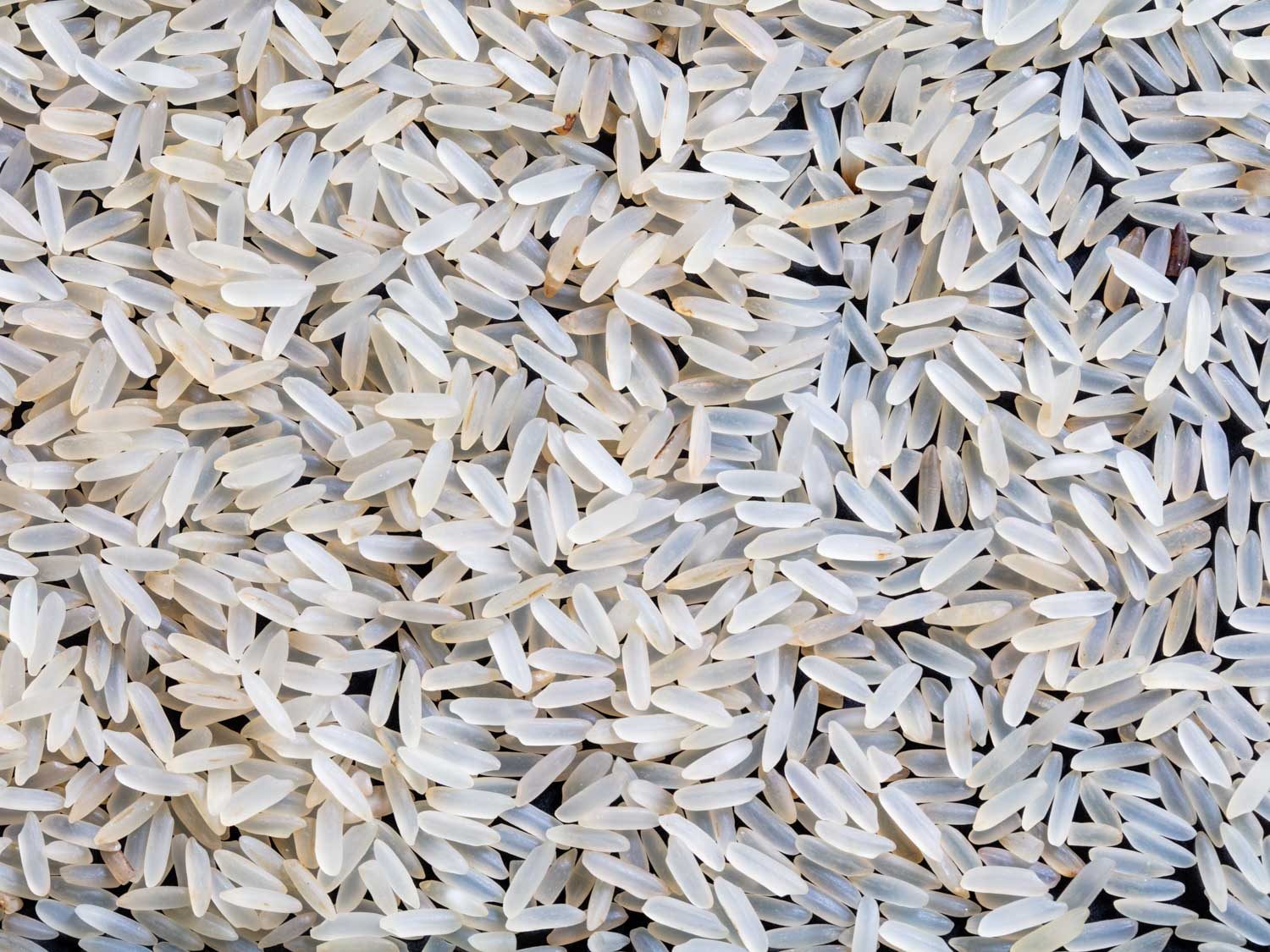
You can purchase almost every variety of rice in its brown, mostly unprocessed state, or in its polished form. Brown rice generally requires more water and more time to cook, due to the extra layer of bran.
You can also purchase “converted” rice, or rice that has been parboiled with its husk on, then dried and processed. Converted rice has a greater nutritional value and an improved shelf life. Uncle Ben’s is probably the best-known converted-rice brand in the United States.
Finally, you’ll also find enriched rice on the market, or rice that has been sprayed with a solution that contains vitamins and nutrients, then dried. This is the type of rice sold by Carolina Rice. Because those nutrients and vitamins exist only on the surface of the grains, rinsing this rice before cooking is discouraged.
Speaking of rinsing rice, if you’re not using converted or enriched rice, you should always rinse your rice before cooking! This removes excess starch on the exterior of the grains, which can make cooked rice unappealingly gummy.
The Starch in Rice: Amylose and Amylopectin
[top]
In our guide to rice varieties below, we’ve decided to group types according to their subspecies, that is, indica or japonica, as the subspecies is a good indicator of more than just the shape of the individual rice grains. While indica varieties are mostly long-grained, there are short-grain varieties; similarly, while it is rare to see a long-grained japonica at your grocery store, they do exist.
But from a cook’s standpoint, the most important quality of a given rice variety is the makeup of its starch content. All starch is made up of two glucose molecules, amylose and amylopectin, and each of those molecules reacts differently when introduced to water at cooking temperatures.
Amylopectin is water-soluble and, when cooked, produces a viscous solution that does not gel, which makes it useful for culinary applications like creating flowing pie fillings. It is also responsible for making cooked rice “glutinous,” or sticky (not to be confused with “glutenous,” which means “containing gluten”—rice doesn’t contain gluten).
Indica varieties of rice usually contain more amylose and less amylopectin than japonica varieties, which is why rice varieties like basmati or jasmine tend to cook up into distinct grains, rather than the slightly sticky cooked grains produced by Japanese varieties.
A Guide to Rice Varieties
[top]
When you visit a grocery store these days, you’ll likely find a fair number of rice options, from “sushi” rice—that is, short- to medium-grained rice that cooks up quite sticky—and medium-grained aromatic jasmine rice to long-grained basmati varieties.
Rice has been grown in the Americas since colonial times. (In fact, the history of growing rice in America—particularly the degree to which enslaved West Africans improved cultivation practices on plantations in the American South—is the subject of heated scholarly dispute.**) Today, American rice is primarily grown in Arkansas, in the Mississippi Delta region, along the Gulf Coast, and in California. Much of the rice you’ve purchased at grocery stores was likely grown in the United States.
** Again, for more information on this fascinating topic, we recommend Rice: Global Networks and New Histories.
However, there are some specialty varieties that are imported into the country, and we’ve included a few of those below as well.
Indica Rice Varieties
[top]
The indica variety of rice, which is most often long-grained and aromatic, is far more widely consumed than the typically short- or medium-grained rice of the japonica variety.
Basmati Rice
[top]
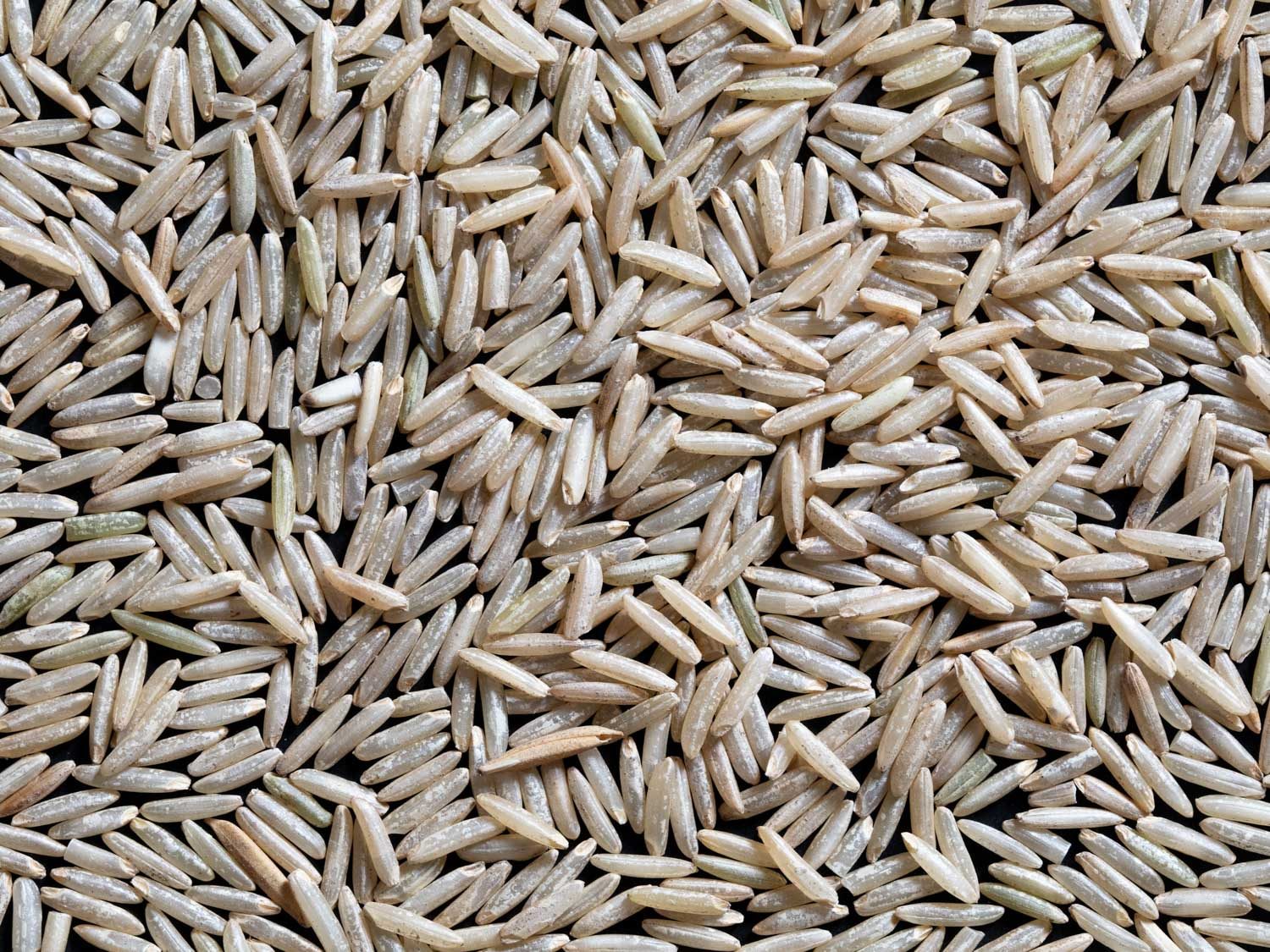
Brown basmati rice.
Basmati is a long-grained and aromatic rice variety that is popular on the Indian subcontinent. Its grains cook up soft, fluffy, and distinct, and the aroma is reminiscent of pandan leaves; the two plants contain the same characteristic aromatic compound. Basmati is the type of rice you’d find in a pilaf or biryani, or served as part of a thali, or alongside a plate of chicken tikka masala. A variety of basmati known as Texmati is grown in the United States.
You can purchase basmati either as brown rice or as polished white rice.
Jasmine Rice
[top]
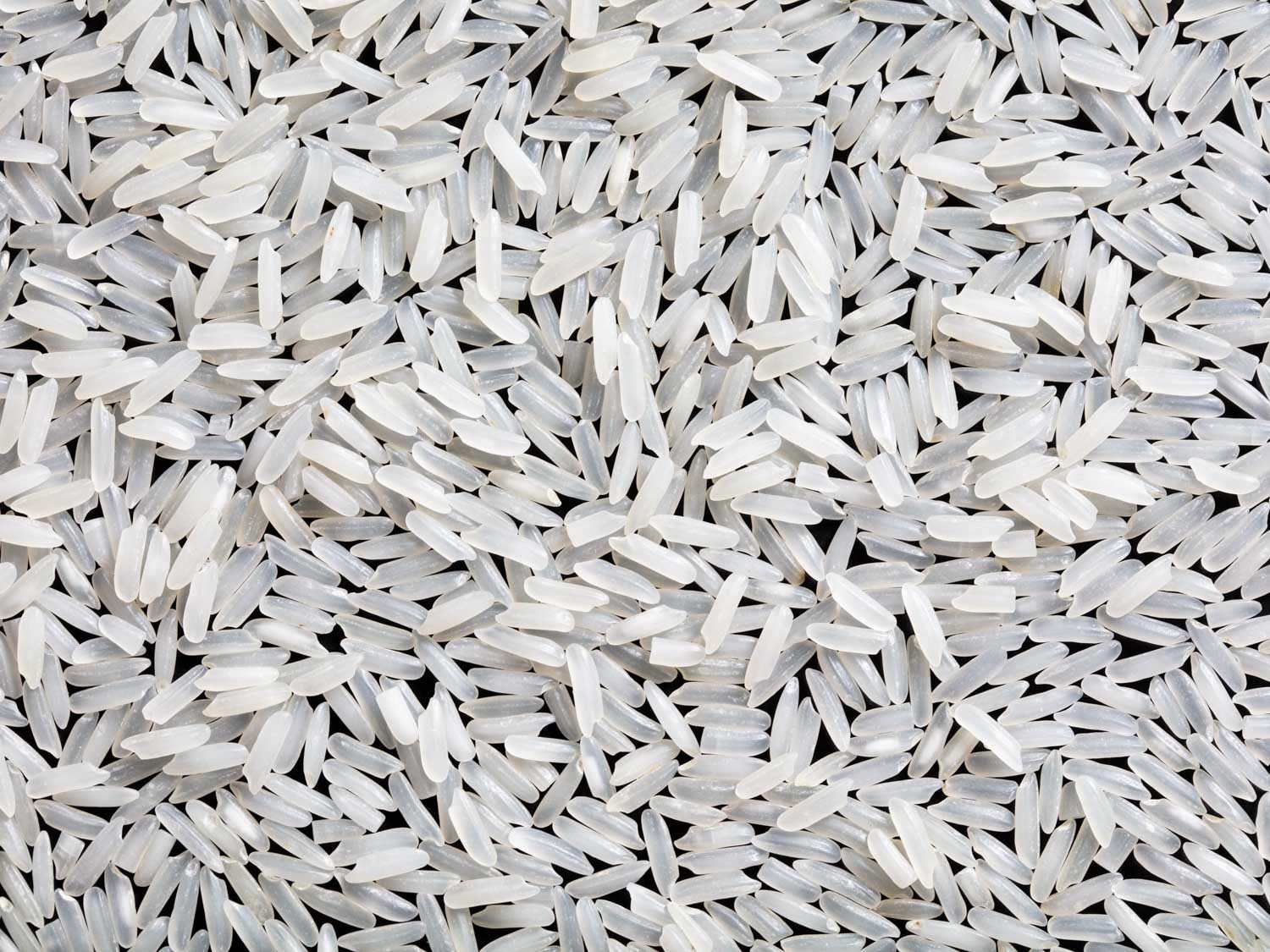
Polished jasmine rice.
Jasmine rice is an indica variety that is grown exclusively in Thailand. The grains are slightly shorter and a little bit plumper than basmati grains, and the aroma is similar to that of basmati but far more pronounced, particularly when the rice is relatively fresh. It loses much of its aroma after extended storage, which is why “new-crop,” or recently harvested, jasmine rice commands a premium price. Jasmine rice tends to offer a harder bite when cooked, compared with basmati.
Obviously, jasmine rice is what you’d serve alongside many Thai dishes, whether you’re making something like phat phrik khing with tofu and long beans, or a wet curry, like this chicken massaman curry. Jasmine is also the variety you’d want to use for Thai-style fried rice.
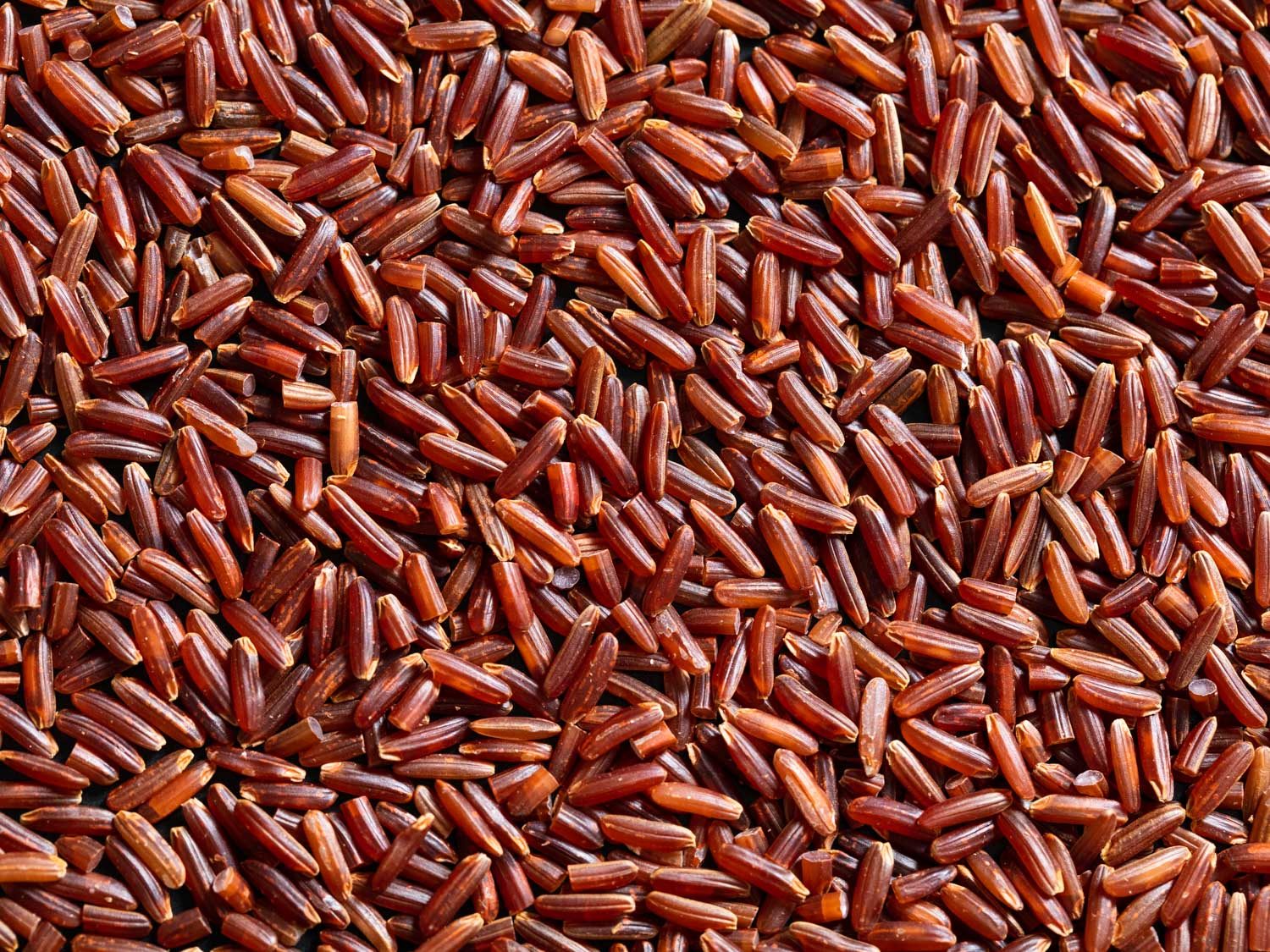
Red jasmine rice.
You can purchase jasmine rice either as polished white rice, brown rice, or red rice. Red rice differs from brown rice in that only the husk has been removed, while brown rice has had both the husk and some layers of bran removed.
Calasparra and Bomba Rice
[top]
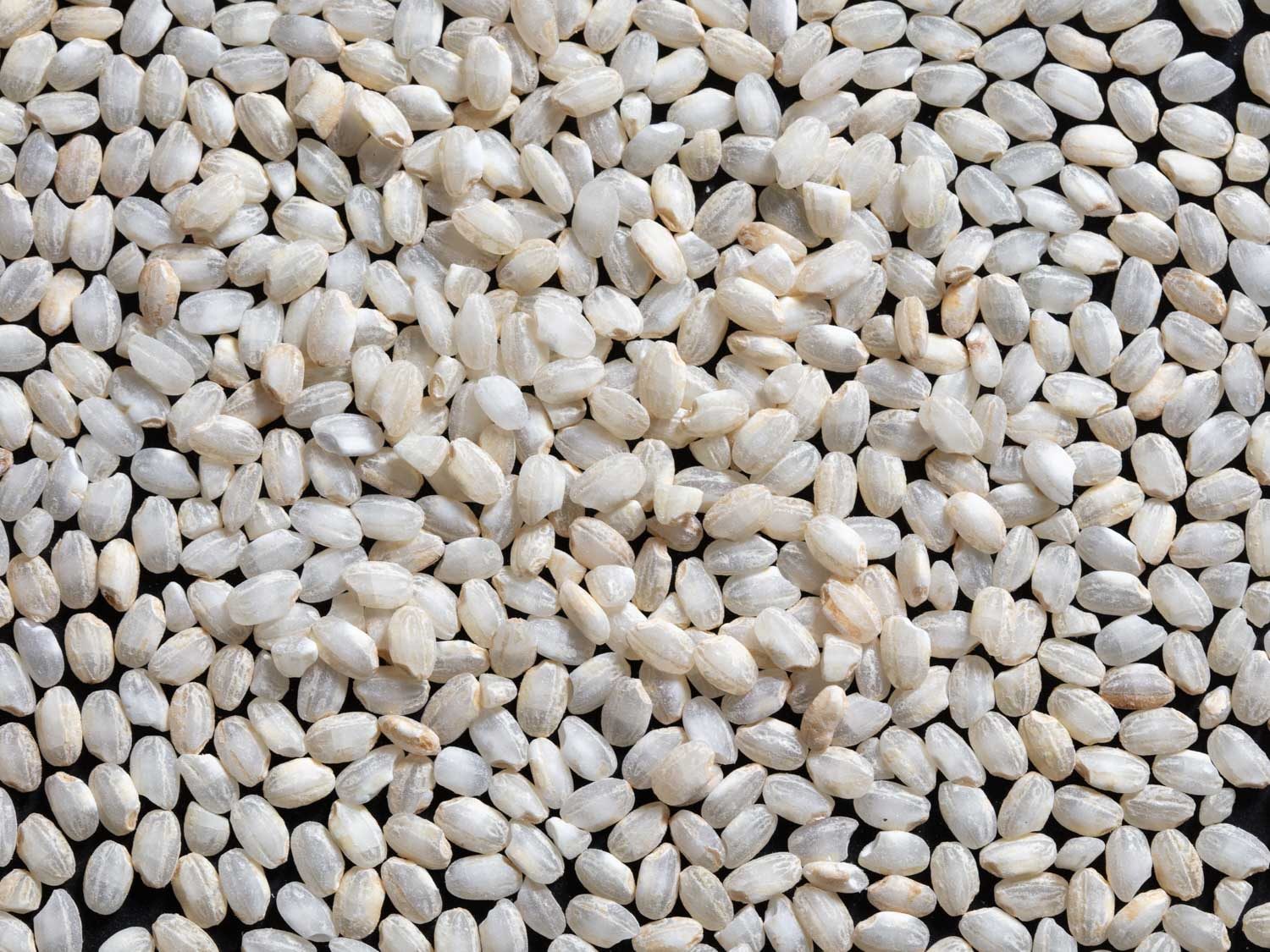
Calasparra rice.
The rice recommended for paella recipes is usually one of two short-grain varieties: Calasparra and bomba. Both of these types, despite being short-grained, are likely indica cultivars, which accounts for some of the characteristics that make them uniquely suitable for paella-making: the ability to absorb a lot of liquid, and the fact that the rice grains remain distinct and un-sticky when fully cooked, due to their relatively low amylopectin content.
Because of these distinct traits, you should never, ever try to swap in other short-grain varieties for Calasparra or bomba rice. If you must find a substitute, a long-grain rice, like jasmine, would be more suitable.
Japonica Rice Varieties
[top]
Japonica rice varieties are, for the most part, short- to medium-grained, with very little overt aroma and a distinctly sticky texture when cooked, due to their relatively high amylopectin content. Although japonica rice is grown around the world, levels of consumption pale in comparison with the worldwide consumption of indica varieties.
“Sushi” Rice
[top]
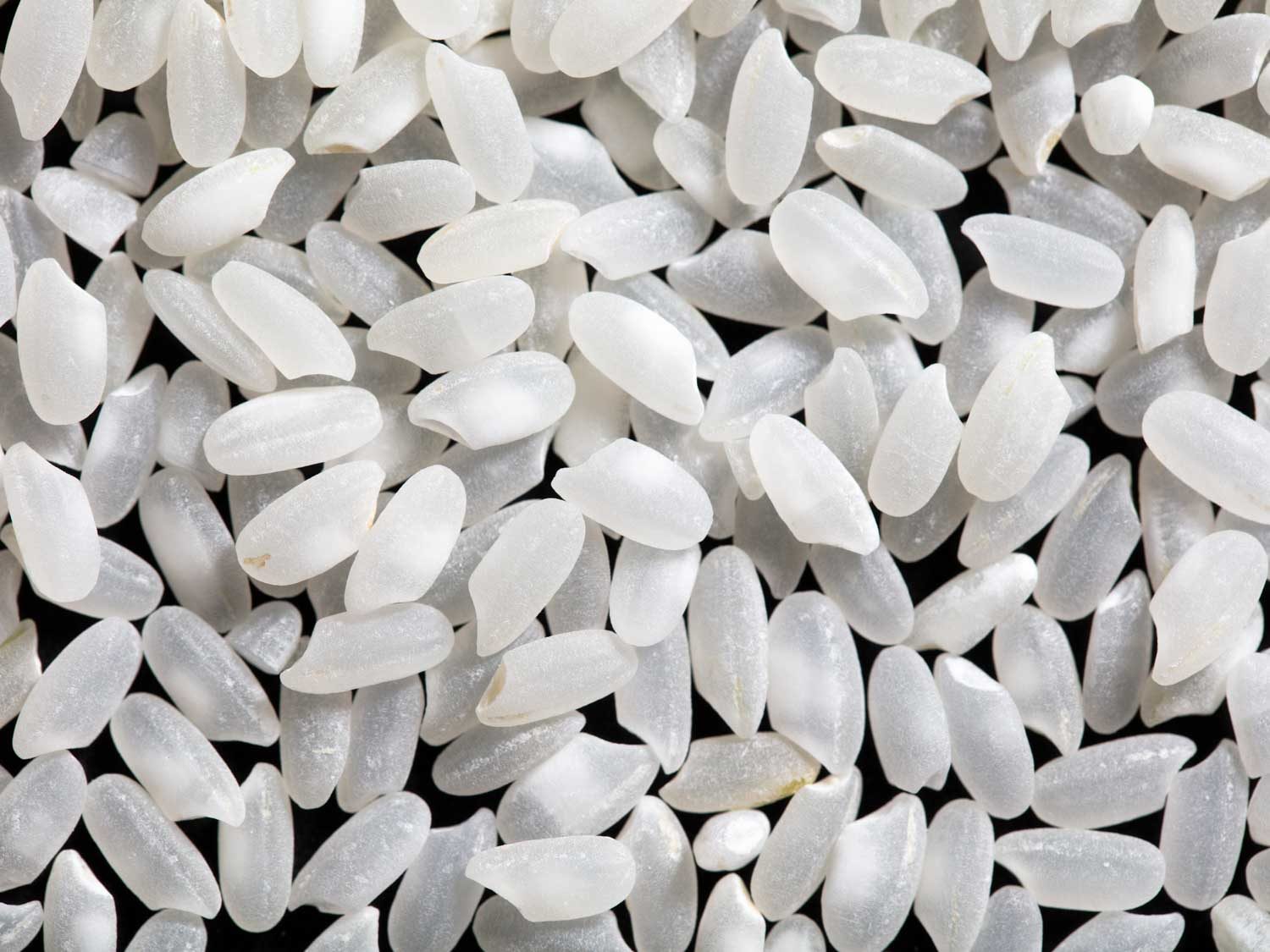
Polished medium-grain Japanese rice.
“Sushi” rice (also called “Japanese” rice) refers to short- and medium-grained cultivars of rice of the type preferred in Japan—it is the kind you’ll probably find served in a sushi restaurant. The most salient quality for sushi-making is the ease with which this type of rice sticks together, making it ideal for constructing little vinegared pillows to use as vehicles for sliced raw fish.
As a result, this type of rice is usually polished and pearly white, but you can buy brown versions of it, as well as versions that have been germinated—or “GABA” rice, which takes its name from the fact that the germination process increases the amount of nutritionally available gamma-aminobutyric acid.
Much of the short- and medium-grain Japanese rice in the United States is produced in California, and it is generally of the Calrose or Koshihikari variety. If you’re making Japanese food—like a Japanese breakfast, say—and you want to teach your American nephew how to be Japanese, this is the kind of rice you’ll use.
Arborio and Carnaroli Rice
[top]
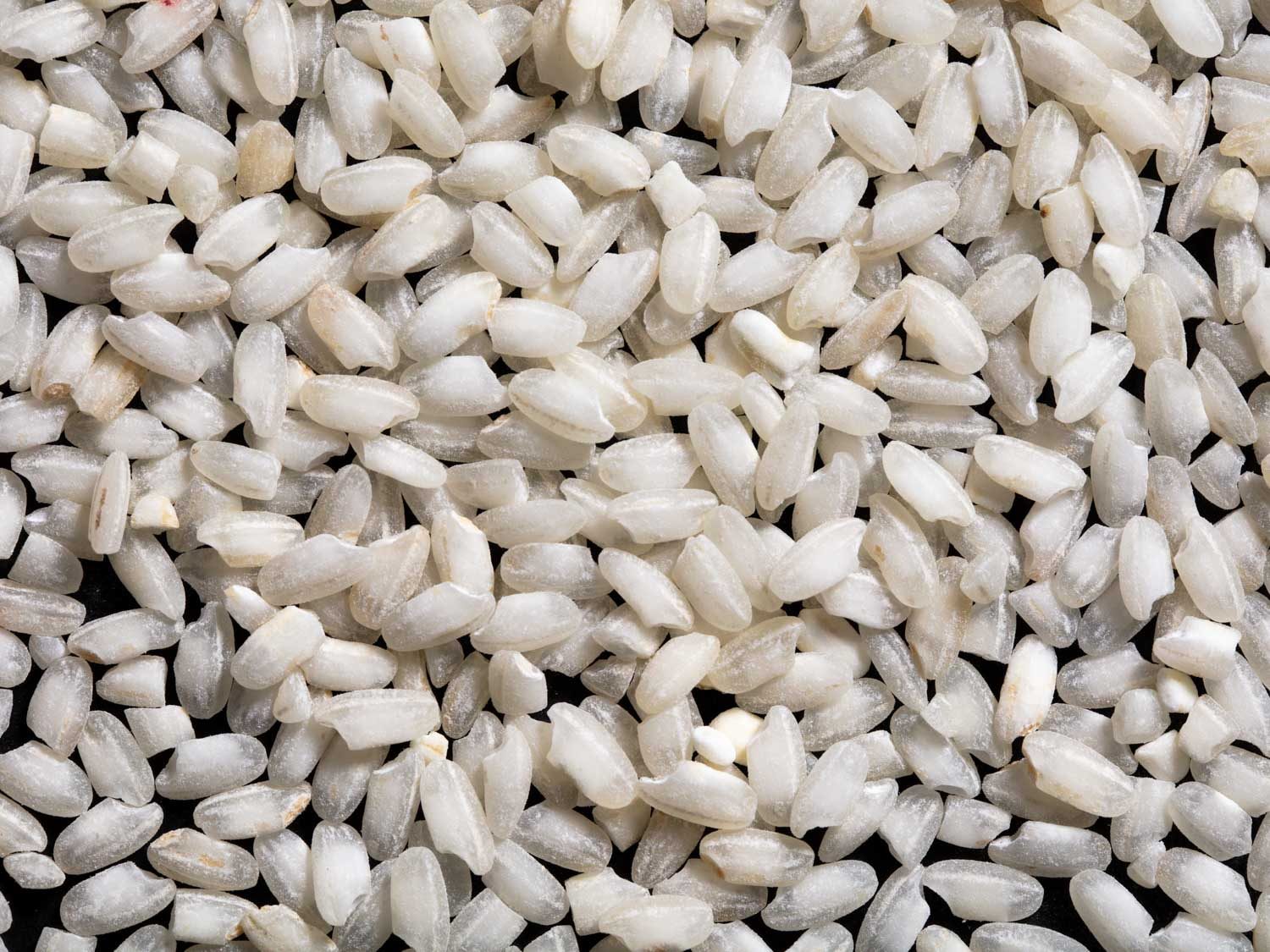
Arborio rice.
Arborio and Carnaroli (and the less well-known Vialone Nano) are short-grain rice varieties from Italy, famously used in classic dishes like risotto alla milanese. The characteristic creaminess of risotto, like the stickiness of Japanese rice, is due to the relatively high amounts of amylopectin in these varieties. (That starch-produced creaminess is why Kenji chooses not to toast his rice for risotto, as toasting can degrade the starch.)
Sticky/Glutinous Rice
[top]
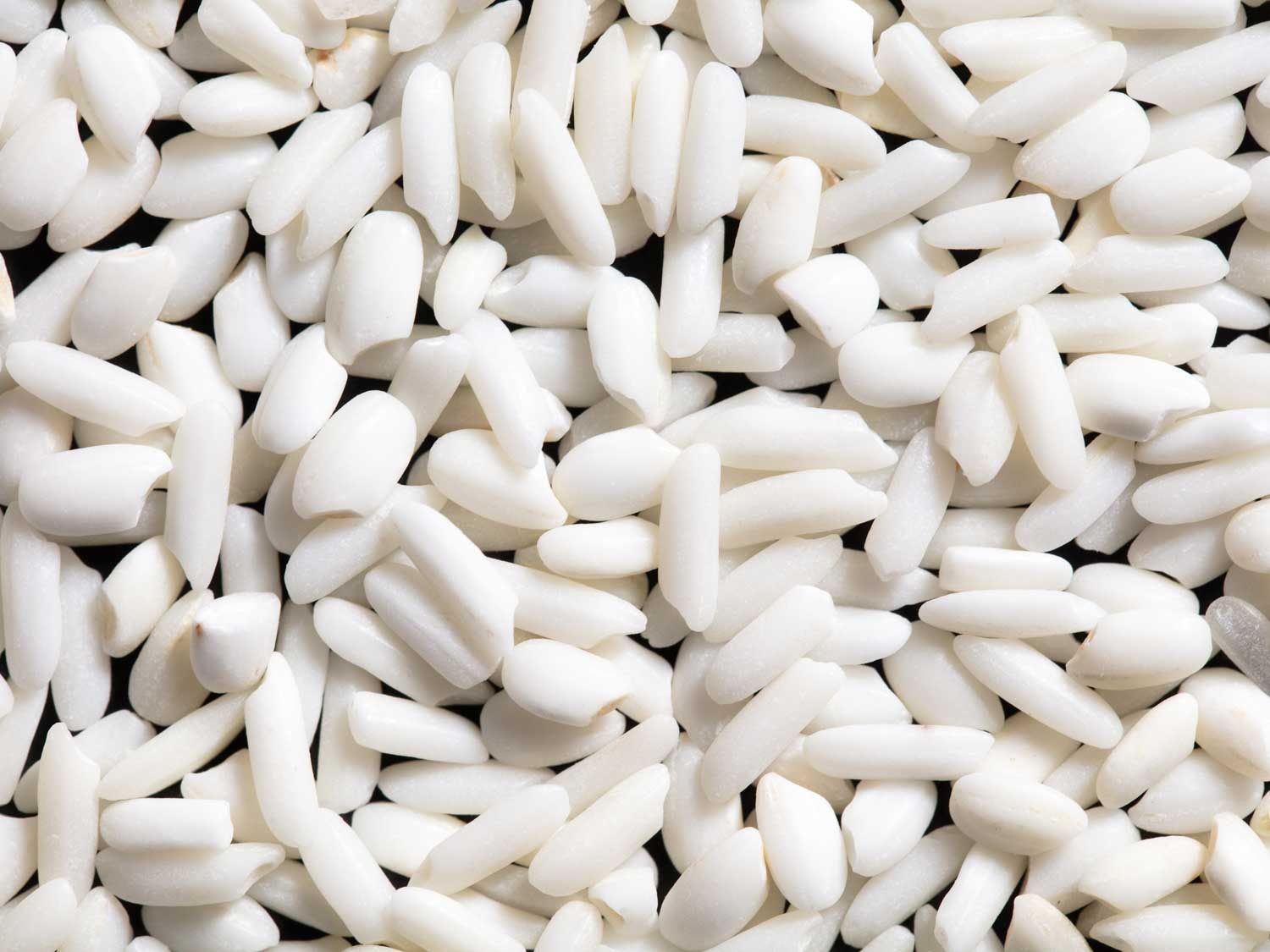
Polished sticky rice.
Also known as glutinous or sweet rice, sticky rice is a short-grain japonica variety that has a relatively large amount of amylopectin, which makes it incredibly sticky. It’s primarily used in Asian cuisines, both in sweet dishes (as when served with mango and sweetened coconut milk, or when used to make mochi) and as a side dish (as when served as part of a Thai or Lao meal, or when wrapped with a bunch of flavorful ingredients for the dim sum staple lo mai gai). Much like dried beans, sticky rice must be soaked to ensure even cooking.
Sticky rice is also used to make toasted-rice powder, which provides a nutty toasted note to a variety of Thai dishes, such as larb.
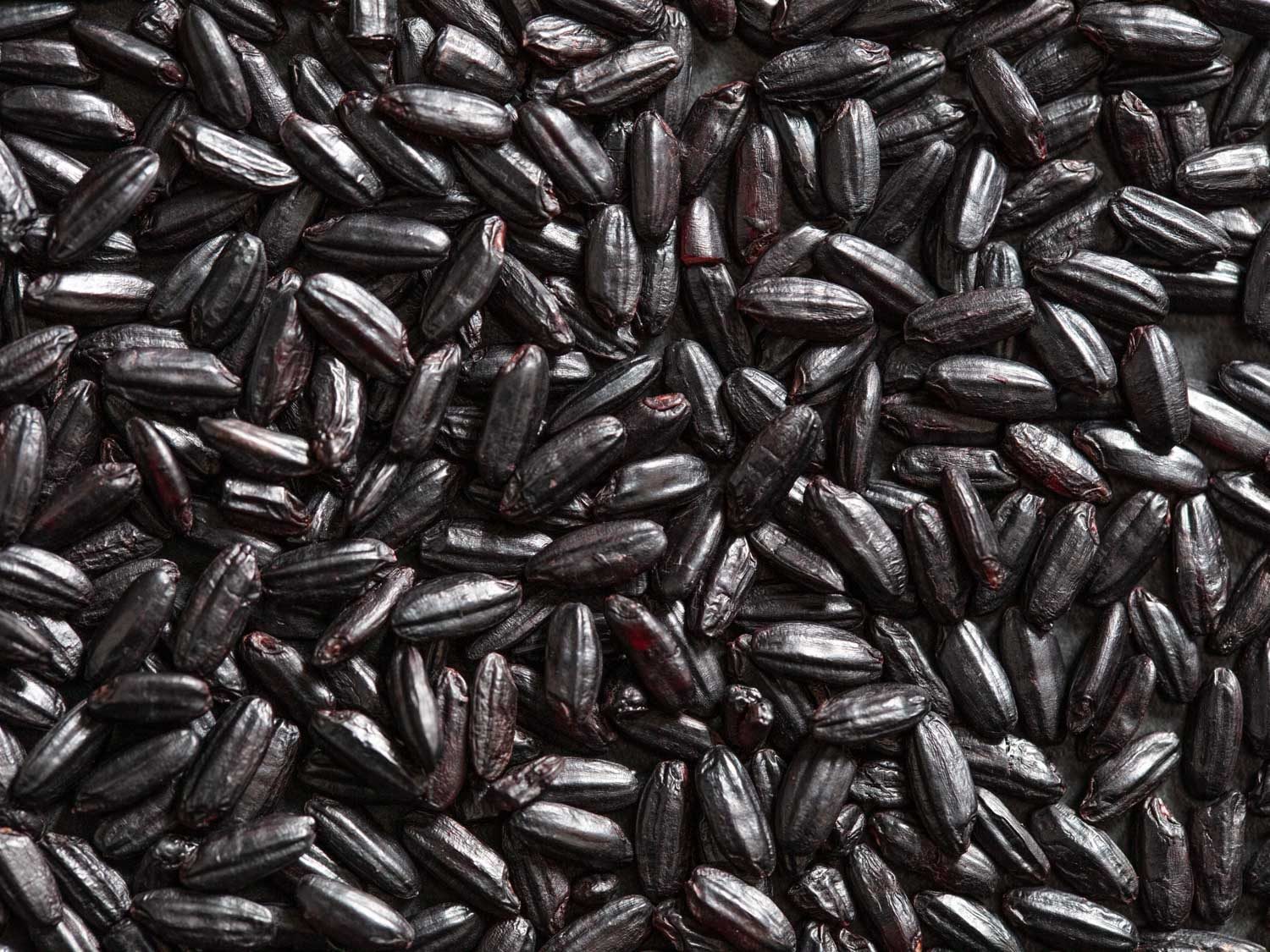
Black sticky rice.
It, too, comes in unpolished form, but rather than the dun color of other rice varieties that retain their bran, sticky rice comes in purple and black. Black rice is typically used to make desserts, and takes on a more purplish hue when cooked.
Carolina Gold Rice
[top]
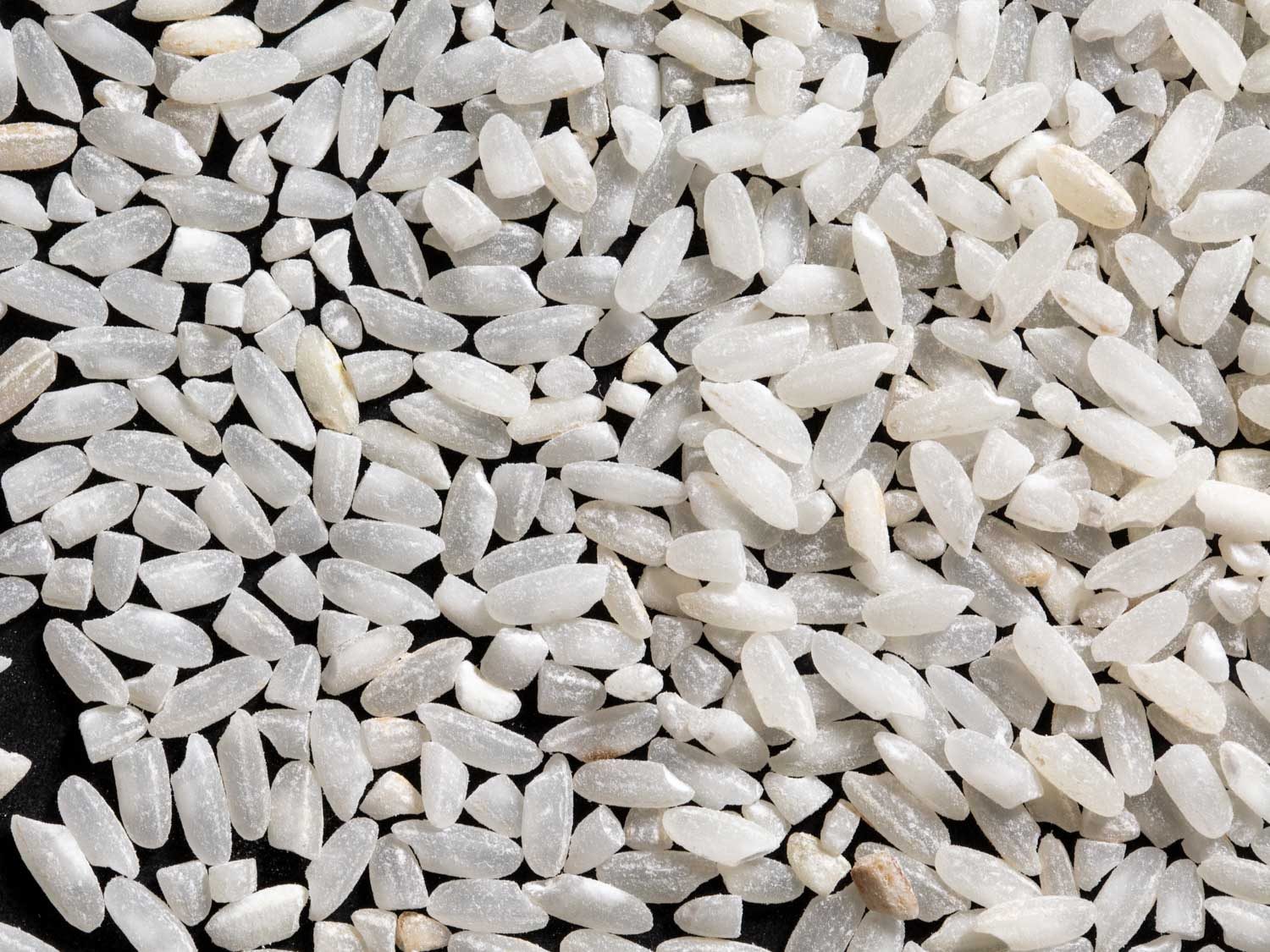 Carolina Gold rice.
Carolina Gold rice.Carolina Gold is a rice variety that has been resurrected from extinction by Anson Mills; you can read all about the history of this heirloom grain in Keith Pandolfi’s story about why Carolina Gold is so beloved. As far as I can tell, despite being long-grained, Carolina Gold is a nonaromatic, long-grained japonica cultivar. Anson Mills now produces a long-grained aromatic variety of Carolina Gold, called Charleston Gold, which has been crossbred with indica varieties.
Wild Rice
[top]
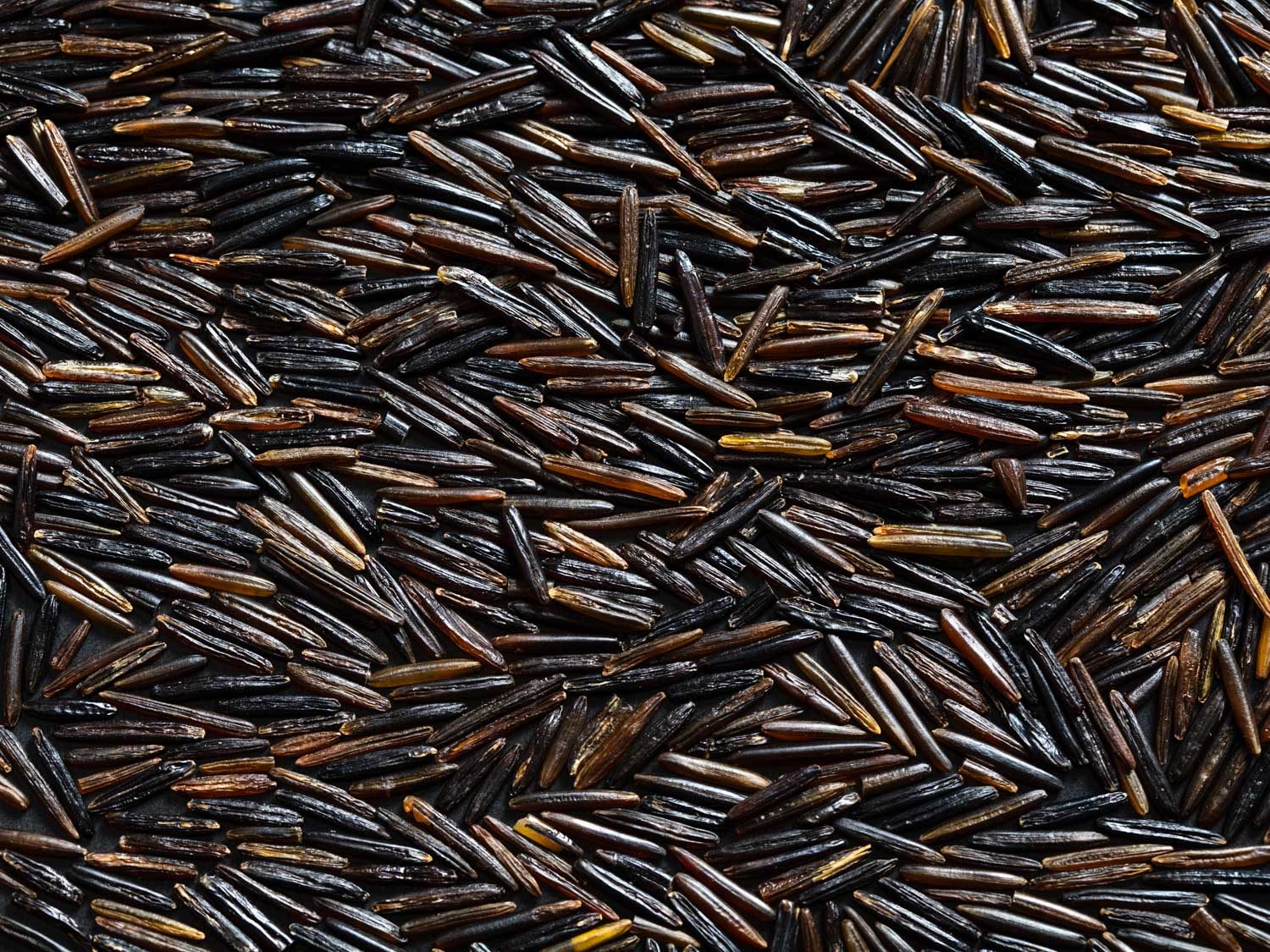
Wild rice.
Wild rice in the United States is not, in fact, wild, nor is it rice, a statement that may throw Daniel into a tizzy. The wild rice you’ll find in stores is the harvested seed of a cultivated, water-loving grass from a different genus entirely; while true rice is from the genus Oryzae, wild rice is of the genus Zizania. But since we call it rice and eat it as rice, it deserves a mention here.
Wild rice cooks up into chewy, variegated grains with a somewhat vegetal, seedy, nevertheless pleasant flavor. It pairs well with fall ingredients and often shows up in Thanksgiving-appropriate dishes, such as Daniel’s wild rice salad with mushrooms or with cranberries and pickled apples, or this baked acorn squash stuffed with wild rice.
All products linked here have been independently selected by our editors. We may earn a commission on purchases, as described in our affiliate policy.
Source link